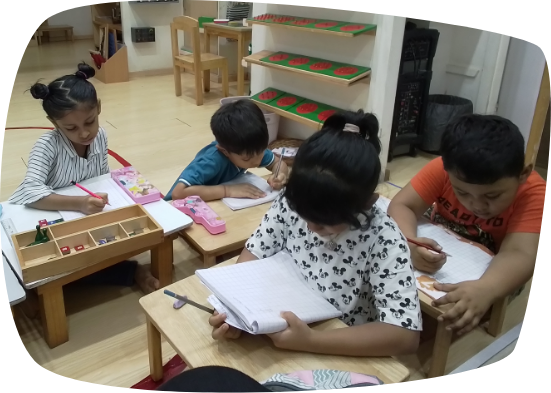Multi-age Groupings, Student Choice of Activity, Uninterrupted Work Cycle with scientific design & research on child development.
Montessori method is developed through a process of careful observation.

The three main components of Montessori method of education include mixed-age classrooms, student freedom, and long blocks of uninterrupted work time.
- Multi-age Groupings of Children
A mixed-age environment is an important feature of Montessori education. Students work together in classes, comprising of different age groups (2.5 to 4 years, 4.1 to 5 years, 5 to 6 years). This arrangement allows each child to learn at his or her own pace regardless of chronological age, and allows students to learn from each other. The older children have the opportunity to become role models and teachers for the younger children reinforcing what they have learned themselves. The younger children learn from observing and working with the older children. The social structure of the class in a Montessori environment functions as a miniature version of society, with kids of various ages getting along well.
- Student Choice of Activity
A mixed-age environment is an important feature of Montessori education. Students work together in classes, comprising of different age groups (2.5 to 4 years, 4.1 to 5 years, 5 to 6 years). This arrangement allows each child to learn at his or her own pace regardless of chronological age, and allows students to learn from each other. The older children have the opportunity to become role models and teachers for the younger children reinforcing what they have learned themselves. The younger children learn from observing and working with the older children. The social structure of the class in a Montessori environment functions as a miniature version of society, with kids of various ages getting along well.
- Uninterrupted Blocks of Time to Engage in Activities
Through her thorough investigation, Maria Montessori identified a number of advantages to uninterrupted work periods: Work cycles enable every student to learn at his or her own pace without feeling behind because one of their peers completed the work before them. Concentration skills improve, allowing students to delve deeper into a certain task.
